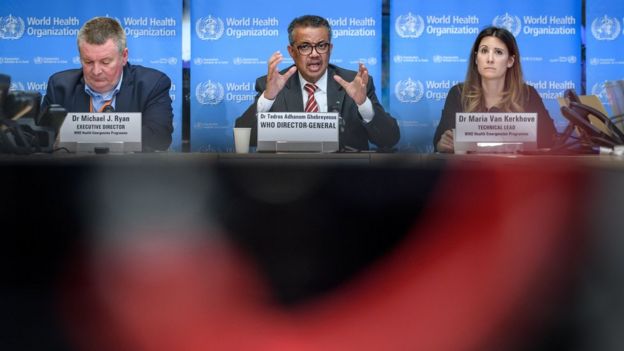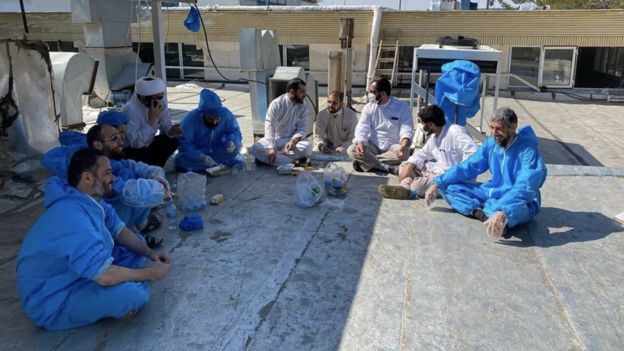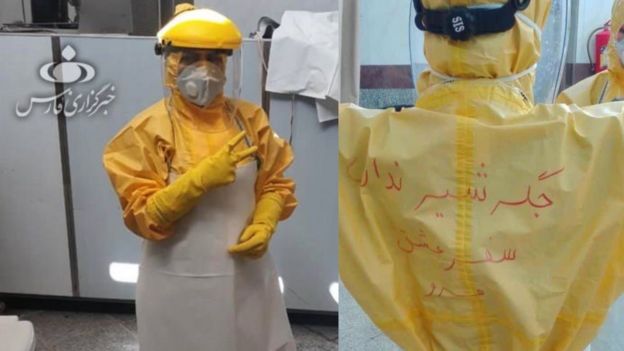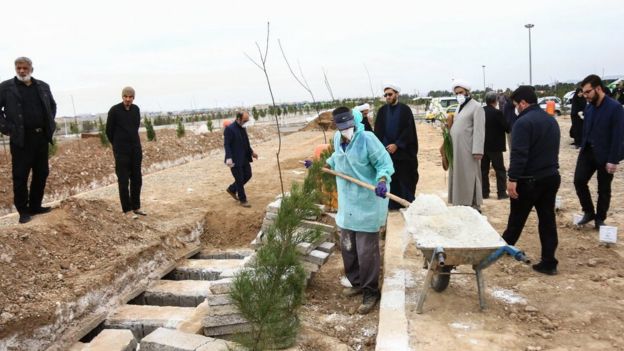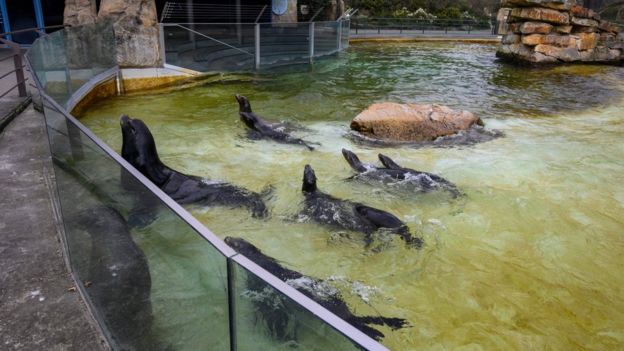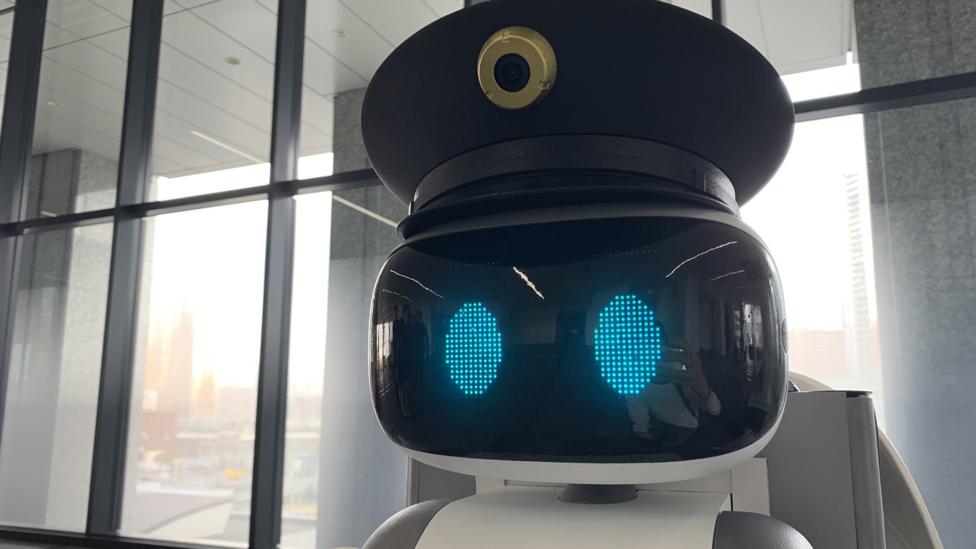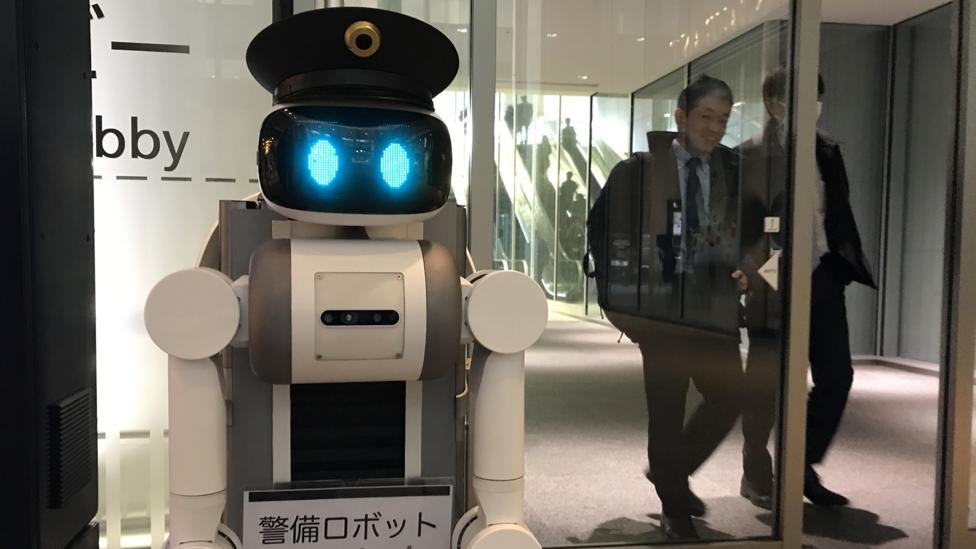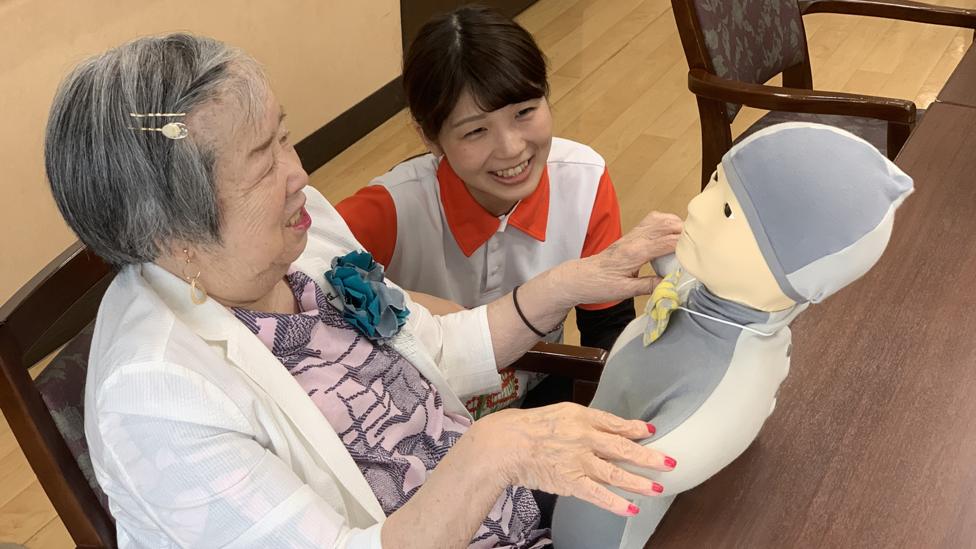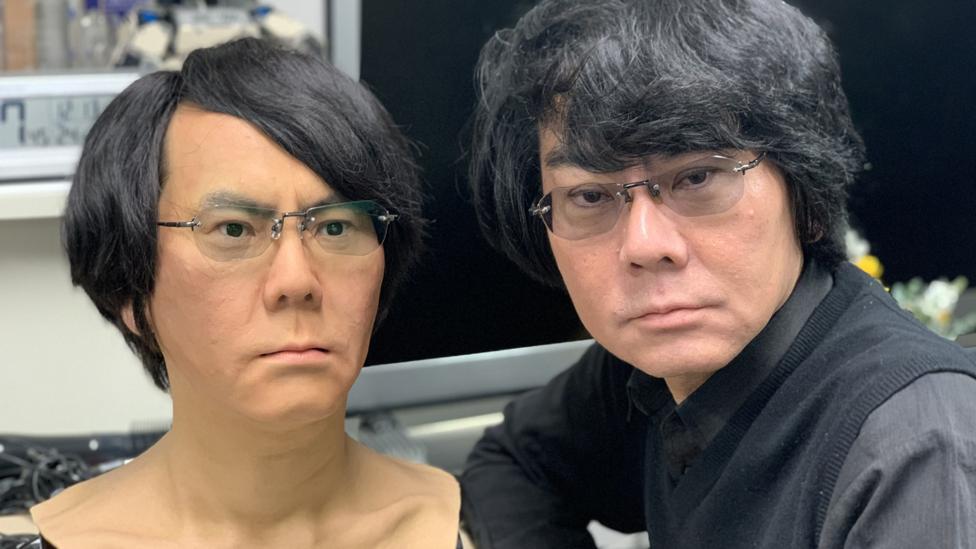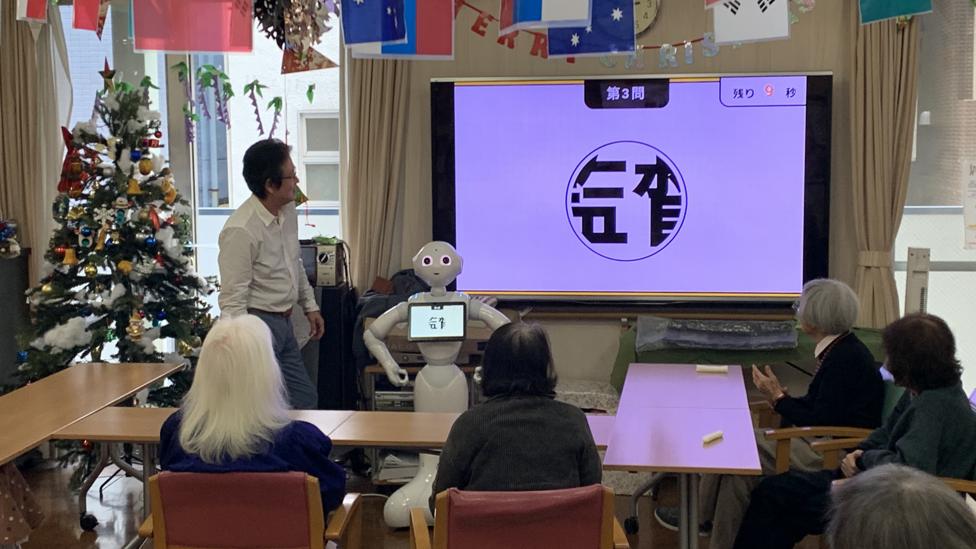Coronavirus: US to halt funding to WHO, says Trump

Trump said the WHO had "failed in its basic duty"
BBC APRIL15, 2020
US President Donald Trump has said he is going to halt funding to the World Health Organization (WHO) because it has "failed in its basic duty" in its response to the coronavirus outbreak.
He accused the UN agency of mismanaging and covering up the spread of the virus after it emerged in China, and said it must be held accountable.
In response, the UN's chief said it was "not the time" to cut funds to the WHO.
Mr Trump has been under fire for his own handling of the pandemic.
He has sought to deflect persistent criticism that he acted too slowly to stop the virus's spread by pointing to his decision in late January to place restrictions on travel from China.
He has accused the WHO of having "criticised" that decision and of being biased towards China more generally.
"I am directing my administration to halt funding while a review is conducted to assess the World Health Organization's role in severely mismanaging and covering up the spread of the coronavirus," Mr Trump told a news conference at the White House on Tuesday.
The WHO has often praised China for its handling of the outbreak
The US is the global health body's largest single funder and gave it more than $400m in 2019.
A decision on whether the US resumes funding will be made after the review, which Mr Trump said would last 60 to 90 days.
The WHO is yet to directly respond but UN Secretary General António Guterres said the international community should be uniting "in solidarity to stop this virus".
"It is my belief that the World Health Organization must be supported, as it is absolutely critical to the world's efforts to win the war against Covid-19," he said.
Germany's foreign minister tweeted that strengthening the "under-funded" WHO was one of the best investments that could be made at this time.

What is the WHO - and who funds it?
Founded in 1948 and based in Geneva, Switzerland, it is the UN agency responsible for global public health
Has 194 member states, and aims to "promote health, keep the world safe and serve the vulnerable"
Involved in vaccination campaigns, health emergencies and supporting countries in primary care
Funded by a combination of members' fees based on wealth and population and voluntary contributions
US provided 15% of its 2018-19 budget - with more than $400m
China gave about $86m in 2018-19; UK gives most of any country apart from the US

The WHO launched an appeal in March for $675m to help fight the coronavirus pandemic and is reported to be planning a fresh appeal for at least $1bn.
Bill Gates, the Microsoft founder and philanthropist, said on Twitter: "Halting funding for the World Health Organization during a world health crisis is as dangerous as it sounds."
The US is the global health body's largest single funder and gave it more than $400m in 2019. The Bill and Melinda Gates Foundation, which is funding Covid-19 treatment and vaccine research, is the second-largest funder.
A decision on whether the US resumes funding will be made after the review, which Mr Trump said would last 60 to 90 days.
In other reaction:
- Germany's foreign minister Heiko Mass tweeted that strengthening the "under-funded" WHO was one of the best investments that could be made at this time
- Chinese foreign ministry spokesman Zhao Lijian said that the decision would "undermine international co-operation" in fighting the virus
- The American Medical Association said it was a "dangerous step in the wrong direction"
- There was no justification for the move at a time when the WHO was "needed more than ever", said the EU's foreign policy chief Josep Borrell
- Australian PM Scott Morrison said he sympathised with Mr Trump's criticisms but that the WHO also does "a lot of important work"
- New Zealand leader Jacinda Ardern said the WHO had provided "advice we can rely on"
- The president was doing "whatever it takes to deflect from the fact that his administration mismanaged this crisis", said Democratic representative Eliot Engel
- The decision was "exactly right", said US Senator Josh Hawley, among many Republicans who share Mr Trump's views on the WHO
What is Donald Trump's argument?
The US has by far the highest number of coronavirus cases and deaths worldwide - with more than 600,000 cases and 26,000 deaths.
Mr Trump accused the WHO of having failed to adequately assess the outbreak when it first emerged in the city of Wuhan, losing precious time.
What is Donald Trump's argument?
"With the outbreak of the Covid-19 pandemic, we have deep concerns whether America's generosity has been put to the best use possible," the US president said.
The US has by far the highest number of coronavirus cases and deaths worldwide- with more than 600,000 cases and 26,000 deaths.
Mr Trump accused the WHO of having failed to adequately assess the outbreak when it first emerged in the city of Wuhan.
"Had the WHO done its job to get medical experts into China to objectively assess the situation on the ground and to call out China's lack of transparency, the outbreak could have been contained at its source with very little death," he told reporters.
"This would have saved thousands of lives and avoided worldwide economic damage. Instead, the WHO willingly took China's assurances to face value... and defended the actions of the Chinese government."
Chinese officials initially covered up the outbreak of the virus in Wuhan, and punished whistleblowers who tried to raise the alarm. Beijing later imposed draconian restrictions, including quarantine zones on an unprecedented scale, drawing effusive praise from the WHO and its director-general, Tedros Adhanom Ghebreyesus.
WHO experts were only allowed to visit China and investigate the outbreak on 10 February, by which time the country had more than 40,000 cases.
White House reporters pointed out, however, that Mr Trump himself praised China's response to the outbreak and downplayed the danger of the virus at home long after the WHO had declared a "public health emergency of international concern".
Skip Twitter post by @realDonaldTrump
China has been working very hard to contain the Coronavirus. The United States greatly appreciates their efforts and transparency. It will all work out well. In particular, on behalf of the American People, I want to thank President Xi!— Donald J. Trump (@realDonaldTrump) January 24, 2020
End of Twitter post by @realDonaldTrump
Democrats accused him of trying to shift blame away from himself in an election year, but many Republicans in Congress praised his decision to cut funding.
Why has the WHO faced criticism?
It is not the first time the WHO's response to the outbreak has come under scrutiny.
On 14 January, the organisation tweeted that preliminary Chinese investigations had found "no clear evidence of human-to-human transmission" of the new virus.
Mr Trump and others have used the tweet to attack the WHO for simply believing China, despite evidence to the contrary. But about a week after that tweet, on 22 January, the agency released a public statement saying that human-to-human transmission did appear to be taking place in Wuhan.
At the end of January, on the same day it declared a public health emergency, the WHO said that travel restrictions were not needed to stop the spread of Covid-19 - advice that was eventually ignored by most countries, including by the Trump administration the next day.
The man leading the fight against the coronavirus
In March, the UN agency was also accused of being unduly influenced by China after a senior official refused to discuss Taiwan's response to the outbreak.
Meanwhile, some health experts also say that the WHO's guidance on face masks has led to public confusion.
Other frequently-made criticisms of the WHO more generally are that it is constrained by politics and a sprawling bureaucracy. It came under particular fire for its response to the 2014-2016 Ebola outbreak in West Africa and how long it took to declare a public health emergency, leading the organisation to announce reforms in response.
Trump targets China's growing influence
At one level, this move is about the coronavirus. Administration officials have been sharply accusing the WHO of missteps in the handling of the pandemic, saying it was biased towards China.
They say the WHO was too ready to support China's deceptive early claims about the virus and then didn't push hard enough against Beijing's attempts to cover up its misinformation. In particular President Trump has latched onto the WHO's criticism of his travel restrictions against China.
But at another level, the move to defund the WHO is part of a broader effort by the Trump administration to curtail China's growing global influence.
The argument is that Chinese leadership in international organisations undermines the rules-based, accountable international system needed to prevent and fight a pandemic.
But, the Wall Street Journal reports that the decision also stems from an ongoing discussion on whether to link US aid dollars to the number of Americans working in the groups that receive them.
Trump scapegoats World Health Organization to deflect from his coronavirus mismanagement – will defund during pandemic
April 14, 2020 By David Badash, The New Civil Rights Movement

President Donald Trump is now scapegoating the World Health Organization (WHO), claiming it must be held accountable for what he claims is their fault that the coronavirus spread into the United States. Trump took no responsibility for his actions allowing the coronavirus to spread throughout the U.S.
America is now the number one in the world for deaths and number of cases.
The WHO is Trump’s seventh target for blame to deflect from his horrific mismanagement of the coronavirus pandemic.
But in making his case Trump curiously citied early reports from the WHO, proving he and his administration knew about the deadly new, novel coronavirus far earlier than he has admitted to previously.
He also blames the WHO’s actions, saying their reports were wrong and they could have saved “thousands of lives” had they produced more accurate information.
Trump ignores his own mistakes.
New York Times opinion writer Nicholas Kristof warns the President:
The World Health Org response to #COVID19 was imperfect, but it was FAR better than the Trump administration’s response. The WHO promptly rolled out a test that worked; the US still lacks enough tests, is still short PPE. So, Mr. President, careful about demanding accountability! https://t.co/z1MbICuR0S
— Nicholas Kristof (@NickKristof) April 14, 2020
CNN’s Nathan McDermott weighs in:
Trump is bashing the World Health Organization for praising
China’s handling of the Coronavirus, even though he himself praised China on at least 12 occasions, as @KFILE and I reported a couple of weeks ago.https://t.co/Pc3VkfghQJ
— Nathan McDermott (@natemcdermott) April 14, 2020
Watch:
Trump is using the April 14 #TrumpPressBriefing to try and shift blame by attacking the World Health Organization pic.twitter.com/6tLkEIMUM8
— Aaron Rupar (@atrupar) April 14, 2020
Trump announces funding halt to World Health Organization

"With the outbreak of the Covid-19 pandemic, we have deep concerns whether America's generosity has been put to the best use possible," the US president said.
The US has by far the highest number of coronavirus cases and deaths worldwide- with more than 600,000 cases and 26,000 deaths.
Mr Trump accused the WHO of having failed to adequately assess the outbreak when it first emerged in the city of Wuhan.
"Had the WHO done its job to get medical experts into China to objectively assess the situation on the ground and to call out China's lack of transparency, the outbreak could have been contained at its source with very little death," he told reporters.
"This would have saved thousands of lives and avoided worldwide economic damage. Instead, the WHO willingly took China's assurances to face value... and defended the actions of the Chinese government."
Chinese officials initially covered up the outbreak of the virus in Wuhan, and punished whistleblowers who tried to raise the alarm. Beijing later imposed draconian restrictions, including quarantine zones on an unprecedented scale, drawing effusive praise from the WHO and its director-general, Tedros Adhanom Ghebreyesus.
WHO experts were only allowed to visit China and investigate the outbreak on 10 February, by which time the country had more than 40,000 cases.
White House reporters pointed out, however, that Mr Trump himself praised China's response to the outbreak and downplayed the danger of the virus at home long after the WHO had declared a "public health emergency of international concern".
Skip Twitter post by @realDonaldTrump
China has been working very hard to contain the Coronavirus. The United States greatly appreciates their efforts and transparency. It will all work out well. In particular, on behalf of the American People, I want to thank President Xi!— Donald J. Trump (@realDonaldTrump) January 24, 2020
End of Twitter post by @realDonaldTrump
Democrats accused him of trying to shift blame away from himself in an election year, but many Republicans in Congress praised his decision to cut funding.
Why has the WHO faced criticism?
It is not the first time the WHO's response to the outbreak has come under scrutiny.
On 14 January, the organisation tweeted that preliminary Chinese investigations had found "no clear evidence of human-to-human transmission" of the new virus.
Mr Trump and others have used the tweet to attack the WHO for simply believing China, despite evidence to the contrary. But about a week after that tweet, on 22 January, the agency released a public statement saying that human-to-human transmission did appear to be taking place in Wuhan.
At the end of January, on the same day it declared a public health emergency, the WHO said that travel restrictions were not needed to stop the spread of Covid-19 - advice that was eventually ignored by most countries, including by the Trump administration the next day.
The man leading the fight against the coronavirus
In March, the UN agency was also accused of being unduly influenced by China after a senior official refused to discuss Taiwan's response to the outbreak.
Meanwhile, some health experts also say that the WHO's guidance on face masks has led to public confusion.
Other frequently-made criticisms of the WHO more generally are that it is constrained by politics and a sprawling bureaucracy. It came under particular fire for its response to the 2014-2016 Ebola outbreak in West Africa and how long it took to declare a public health emergency, leading the organisation to announce reforms in response.

Trump targets China's growing influence

At one level, this move is about the coronavirus. Administration officials have been sharply accusing the WHO of missteps in the handling of the pandemic, saying it was biased towards China.
They say the WHO was too ready to support China's deceptive early claims about the virus and then didn't push hard enough against Beijing's attempts to cover up its misinformation. In particular President Trump has latched onto the WHO's criticism of his travel restrictions against China.
But at another level, the move to defund the WHO is part of a broader effort by the Trump administration to curtail China's growing global influence.
The argument is that Chinese leadership in international organisations undermines the rules-based, accountable international system needed to prevent and fight a pandemic.
But, the Wall Street Journal reports that the decision also stems from an ongoing discussion on whether to link US aid dollars to the number of Americans working in the groups that receive them.
President Trump's decision is a major blow to the World Health Organization (WHO). The US is the biggest contributor to the UN agency, where the budget is around $2bn (£1.6bn) a year.
The president, while himself facing withering criticism for his handling of the outbreak in the US, is focussing his anger on how the WHO handled the early days and weeks of the outbreak.
He is not the first to criticise the UN agency for its effusive praise of China's response to the outbreak, while others - including medics in China - described how their early concerns about the virus were silenced by authorities.
The director general of the WHO, Dr Tedros Adhanom Ghebreyesus, has responded to this criticism many times, saying he would continue to give praise where praise was due, and stressing that China had helped slow the spread of the virus internationally - buying other countries time to prepare for what was coming.
Last week, when President Trump floated the idea of withholding funding to the UN body, Dr Tedros called for countries not to "politicise this virus.". He also said he welcomed a review of the WHO's response to the outbreak because "we want to learn from our mistakes, from our strengths and move forward".
But he said, the focus now should be on "fighting this virus."
Trump scapegoats World Health Organization to deflect from his coronavirus mismanagement – will defund during pandemic
April 14, 2020 By David Badash, The New Civil Rights Movement

President Donald Trump is now scapegoating the World Health Organization (WHO), claiming it must be held accountable for what he claims is their fault that the coronavirus spread into the United States. Trump took no responsibility for his actions allowing the coronavirus to spread throughout the U.S.
America is now the number one in the world for deaths and number of cases.
The WHO is Trump’s seventh target for blame to deflect from his horrific mismanagement of the coronavirus pandemic.
But in making his case Trump curiously citied early reports from the WHO, proving he and his administration knew about the deadly new, novel coronavirus far earlier than he has admitted to previously.
He also blames the WHO’s actions, saying their reports were wrong and they could have saved “thousands of lives” had they produced more accurate information.
Trump ignores his own mistakes.
New York Times opinion writer Nicholas Kristof warns the President:
The World Health Org response to #COVID19 was imperfect, but it was FAR better than the Trump administration’s response. The WHO promptly rolled out a test that worked; the US still lacks enough tests, is still short PPE. So, Mr. President, careful about demanding accountability! https://t.co/z1MbICuR0S
— Nicholas Kristof (@NickKristof) April 14, 2020
CNN’s Nathan McDermott weighs in:
Trump is bashing the World Health Organization for praising
China’s handling of the Coronavirus, even though he himself praised China on at least 12 occasions, as @KFILE and I reported a couple of weeks ago.https://t.co/Pc3VkfghQJ
— Nathan McDermott (@natemcdermott) April 14, 2020
Watch:
Trump is using the April 14 #TrumpPressBriefing to try and shift blame by attacking the World Health Organization pic.twitter.com/6tLkEIMUM8
— Aaron Rupar (@atrupar) April 14, 2020
Trump announces funding halt to World Health Organization

AFP / MANDEL NGANUS
President Donald Trump addresses a daily briefing by the White House
coronavirus task force, on April 14, 2020
President Donald Trump announced Tuesday a suspension of US funding to the World Health Organization because he said it had covered up the seriousness of the COVID-19 outbreak in China before it spread around the world.
Trump told a press conference he was instructing his administration to halt funding while "a review is conducted to assess the World Health Organization's role in severely mismanaging and covering up the spread of the coronavirus."
According to Trump, the WHO prevented transparency over the outbreak and the United States -- the UN body's biggest funder which provided $400 million last year -- will now "discuss what we do with all that money that goes to the WHO."
"With the outbreak of the COVID-19 pandemic, we have deep concerns whether America's generosity has been put to the best use possible."
Trump's attack on the WHO reflects his belief that the organization is biased toward China and colluded to prevent the United States' main economic rival from having to be open about the unfolding health disaster.
He says this cost other countries crucial time to prepare and delayed decisions to stop international trave
"The WHO's attack on travel restrictions put political correctness above life-saving measures," he said.
"Had the WHO done its job to get medical experts into China to objectively assess the situation on the ground and to call out China's lack of transparency, the outbreak could have been contained at its source with very little death," he said.
"This would have saved thousands of lives and avoided worldwide economic damage. Instead, the WHO willingly took China's assurances to face value... and defended the actions of the Chinese government," he said.
Critics have pointed out that for weeks after the coronavirus epidemic began unfolding, Trump frequently praised Beijing's response and downplayed the danger it posed at home.
15 APR 2020
Trump halts WHO funding, with world on edge over virus lockdown

AFP / MANDEL NGANUS
President Donald Trump announced a halt to funding for the World Health Organization during a briefing at the White House
US President Donald Trump on Tuesday cut off funding to the World Health Organization, accusing the UN body of mishandling the coronavirus crisis as governments grapple with how and when to get their struggling economies back to work.
The deadly pandemic has already killed more than 125,000 people and infected nearly two million worldwide since it first emerged in China late last year.
The novel coronavirus has also upended the lives of billions of people as nations imposed lockdown measures to curb its spread -- undoubtedly reducing the death toll but also sending the global economy into a tailspin.

US President Donald Trump on Tuesday cut off funding to the World Health Organization, accusing the UN body of mishandling the coronavirus crisis as governments grapple with how and when to get their struggling economies back to work.
The deadly pandemic has already killed more than 125,000 people and infected nearly two million worldwide since it first emerged in China late last year.
The novel coronavirus has also upended the lives of billions of people as nations imposed lockdown measures to curb its spread -- undoubtedly reducing the death toll but also sending the global economy into a tailspin.

AFP / Simon MALFATTO
Global spread of coronavirus
As the tally of deaths and new infections appears to begin to level off, world leaders and citizens are fiercely debating when to lift stay-at-home orders.
Trump said he could see "rays of light" on the horizon for the world's largest economy, but launched a virulent attack on the WHO for "severely mismanaging and covering up the spread of the coronavirus."
"We have deep concerns whether America's generosity has been put to the best use possible," Trump told reporters at the White House as he announced a halt to WHO funding.
He accused the Geneva-based agency of propagating "false information about transmission and mortality," and charged that its reliance on Chinese data had "likely caused a 20-fold increase in cases worldwide."
The US contributed $400 million to the WHO last year.
Trump had made no secret of his contempt for what he calls a "China-centric" institution, but his caustic barbs were sure to raise hackles -- especially when the crisis is far from over.
Some shops in Austria and Italy reopened Tuesday, one day after Spain allowed construction and factory workers to return to their jobs.

As the tally of deaths and new infections appears to begin to level off, world leaders and citizens are fiercely debating when to lift stay-at-home orders.
Trump said he could see "rays of light" on the horizon for the world's largest economy, but launched a virulent attack on the WHO for "severely mismanaging and covering up the spread of the coronavirus."
"We have deep concerns whether America's generosity has been put to the best use possible," Trump told reporters at the White House as he announced a halt to WHO funding.
He accused the Geneva-based agency of propagating "false information about transmission and mortality," and charged that its reliance on Chinese data had "likely caused a 20-fold increase in cases worldwide."
The US contributed $400 million to the WHO last year.
Trump had made no secret of his contempt for what he calls a "China-centric" institution, but his caustic barbs were sure to raise hackles -- especially when the crisis is far from over.
Some shops in Austria and Italy reopened Tuesday, one day after Spain allowed construction and factory workers to return to their jobs.

AFP / Anne-Christine POUJOULAT
France has extended its nationwide coronavirus lockdown through
mid-May 2020 -- here, a cat crosses the empty amphitheater in Arles
But France extended its nationwide lockdown for another month, and India extended confinement orders for its 1.3 billion people until at least May 3.
And dire economic forecasts poured in throughout the day.
- 'The Great Lockdown' -

But France extended its nationwide lockdown for another month, and India extended confinement orders for its 1.3 billion people until at least May 3.
And dire economic forecasts poured in throughout the day.
- 'The Great Lockdown' -

AFP / Gal ROMAIMF
growth forecasts by region and for selected countries in 2020
The International Monetary Fund predicted the "Great Lockdown" would spark the worst global downturn since the Great Depression of the 1930s.
The Washington-based IMF said the global economy is expected to shrink by three percent this year -- and the US economy is expected to contract by 5.9 percent.
"Much worse growth outcomes are possible and maybe even likely," it said.
IMF chief economist Gita Gopinath said in 2020 and 2021, global GDP could slip by three percent or about $9 trillion -- "greater than the economies of Japan and Germany combined."
But if the virus is contained and economies can begin operating again, 2021 should see a rebound of 5.8 percent, the Fund added.
Individual governments also issued gut-wrenching outlooks -- France said its economy would shrink by a worse-than-expected eight percent in 2020, and Britain predicted a 13 percent drop in GDP.
In a bit of good news, the US Treasury announced a deal with the country's major airlines aimed at keeping workers paid and avoiding bankruptcies in an industry that employs 750,000 people. Details were not immediately disclosed.
- 'Hope it's not too early' -

The International Monetary Fund predicted the "Great Lockdown" would spark the worst global downturn since the Great Depression of the 1930s.
The Washington-based IMF said the global economy is expected to shrink by three percent this year -- and the US economy is expected to contract by 5.9 percent.
"Much worse growth outcomes are possible and maybe even likely," it said.
IMF chief economist Gita Gopinath said in 2020 and 2021, global GDP could slip by three percent or about $9 trillion -- "greater than the economies of Japan and Germany combined."
But if the virus is contained and economies can begin operating again, 2021 should see a rebound of 5.8 percent, the Fund added.
Individual governments also issued gut-wrenching outlooks -- France said its economy would shrink by a worse-than-expected eight percent in 2020, and Britain predicted a 13 percent drop in GDP.
In a bit of good news, the US Treasury announced a deal with the country's major airlines aimed at keeping workers paid and avoiding bankruptcies in an industry that employs 750,000 people. Details were not immediately disclosed.
- 'Hope it's not too early' -

APA/AFP / HELMUT FOHRINGER
Around the globe, some countries showed signs of setting off on the long road back to normalcy.
Vienna's popular Favoriten shopping district drew mask-clad shoppers after the government allowed some small stores as well as hardware and gardening shops to reopen across Austria, which has been spared the worst of the virus.
"I just hope by God that it's not too early" to ease the lockdown, 75-year-old pensioner Anita Kakac told AFP.
In Italy, children's clothing shops and bookstores opened their doors Tuesday, but some fearful owners kept their boutiques shuttered.

Around the globe, some countries showed signs of setting off on the long road back to normalcy.
Vienna's popular Favoriten shopping district drew mask-clad shoppers after the government allowed some small stores as well as hardware and gardening shops to reopen across Austria, which has been spared the worst of the virus.
"I just hope by God that it's not too early" to ease the lockdown, 75-year-old pensioner Anita Kakac told AFP.
In Italy, children's clothing shops and bookstores opened their doors Tuesday, but some fearful owners kept their boutiques shuttered.

AFP / Tiziana FABI
Some shops reopened in Italy like this one in Rome, but not all business owners were on board, worrying about the health consequences
Italy's death toll is now above 20,000 -- the second worst after the US, though far higher per capita -- but deaths and infections have eased off.
Denmark planned to open some of its schools Wednesday after a month-long shutdown, and the Czech government said it would begin easing lockdown measures on April 20.
WHO chief Tedros Adhanom Ghebreyesus has warned that control measures "must be lifted slowly," noting that the coronavirus was 10 times deadlier than the 2009-10 swine flu outbreak.
- 'We are changing the curve' -

Italy's death toll is now above 20,000 -- the second worst after the US, though far higher per capita -- but deaths and infections have eased off.
Denmark planned to open some of its schools Wednesday after a month-long shutdown, and the Czech government said it would begin easing lockdown measures on April 20.
WHO chief Tedros Adhanom Ghebreyesus has warned that control measures "must be lifted slowly," noting that the coronavirus was 10 times deadlier than the 2009-10 swine flu outbreak.
- 'We are changing the curve' -

AFP / MANDEL NGANUS
President Donald Trump -- seen here at a meeting with patients who have recovered from the novel coronavirus -- is at odds with state governors about how to reopen the world biggest's economy
In the United States, the death toll in hard-hit New York state soared when officials added thousands of suspected deaths in New York City to the total.
But new hospital admissions and infections in the state were down, and Governor Andrew Cuomo offered a glimmer of hope.
"We are changing the curve, every day. We've shown that we control the virus -- the virus doesn't control us," Cuomo said.
Trump sparked controversy on Monday by implying he could force state governors and city mayors to send people back to work at his command.
In the United States, the death toll in hard-hit New York state soared when officials added thousands of suspected deaths in New York City to the total.
But new hospital admissions and infections in the state were down, and Governor Andrew Cuomo offered a glimmer of hope.
"We are changing the curve, every day. We've shown that we control the virus -- the virus doesn't control us," Cuomo said.
Trump sparked controversy on Monday by implying he could force state governors and city mayors to send people back to work at his command.
On Tuesday, he insisted the federal government and state leaders were working together to come up with a workable solution, and that he and the governors were "all getting along."
But the Republican president, who is running for re-election in November, also warned: "The governors are responsible. They have to take charge. They have to do a great job."
Local leaders on both US coasts have banded together and said they will make their own decisions -- and proceed with caution.
"I don't want to make a political decision that puts people's lives at risk and puts the economy at even more risk," California Governor Gavin Newsom said.
burs-sst/bgs
But the Republican president, who is running for re-election in November, also warned: "The governors are responsible. They have to take charge. They have to do a great job."
Local leaders on both US coasts have banded together and said they will make their own decisions -- and proceed with caution.
"I don't want to make a political decision that puts people's lives at risk and puts the economy at even more risk," California Governor Gavin Newsom said.
burs-sst/bgs
